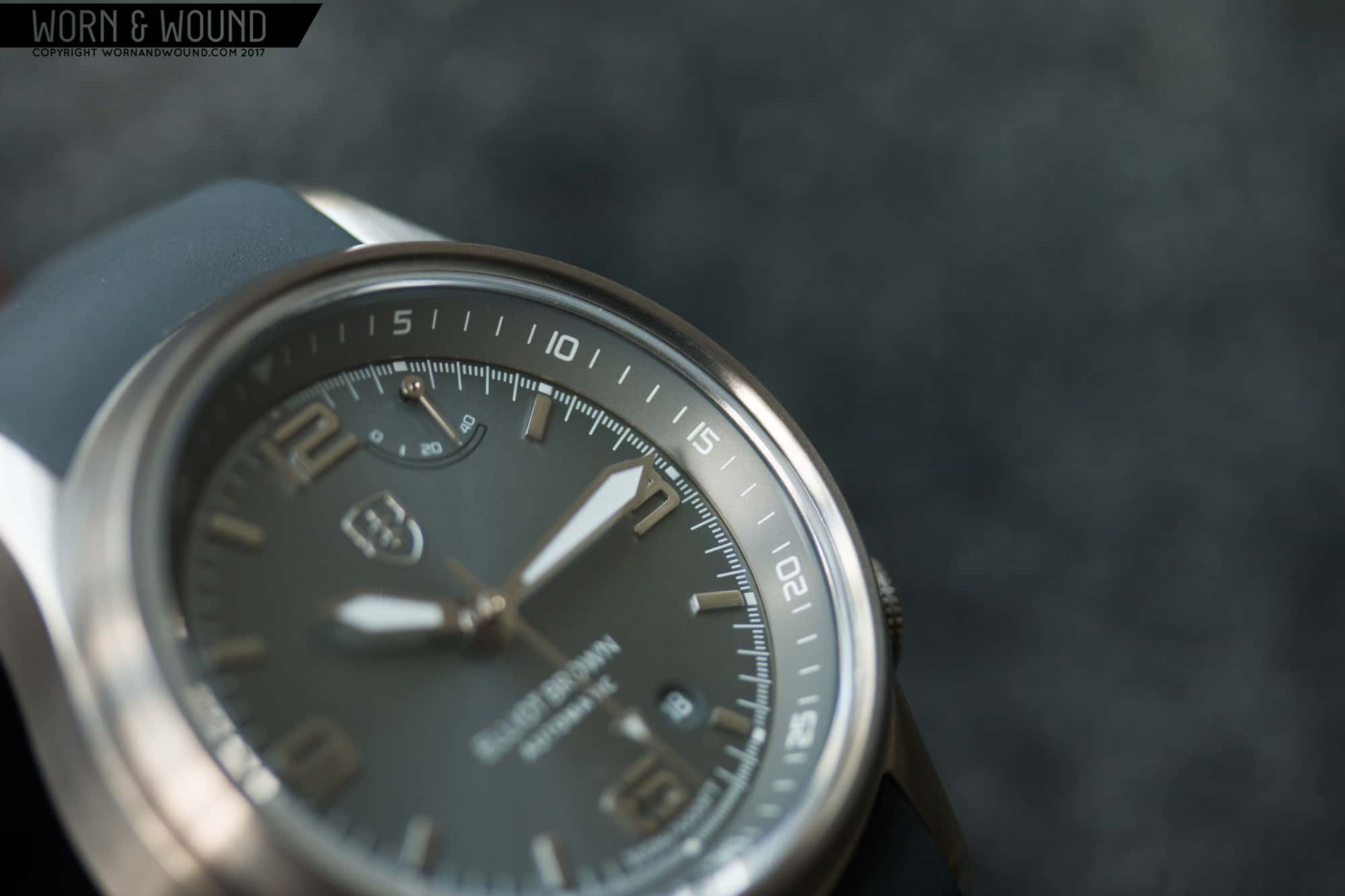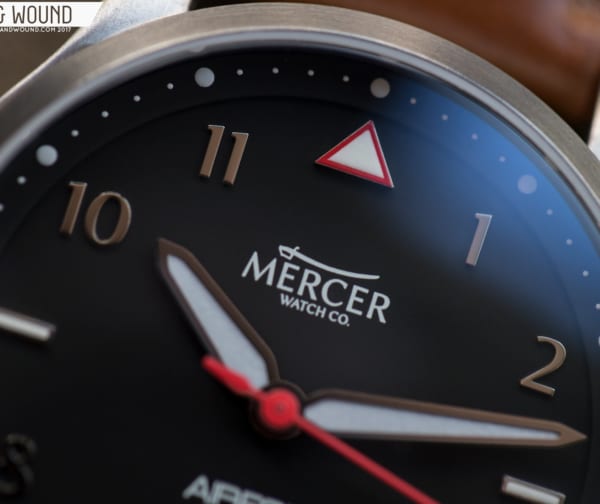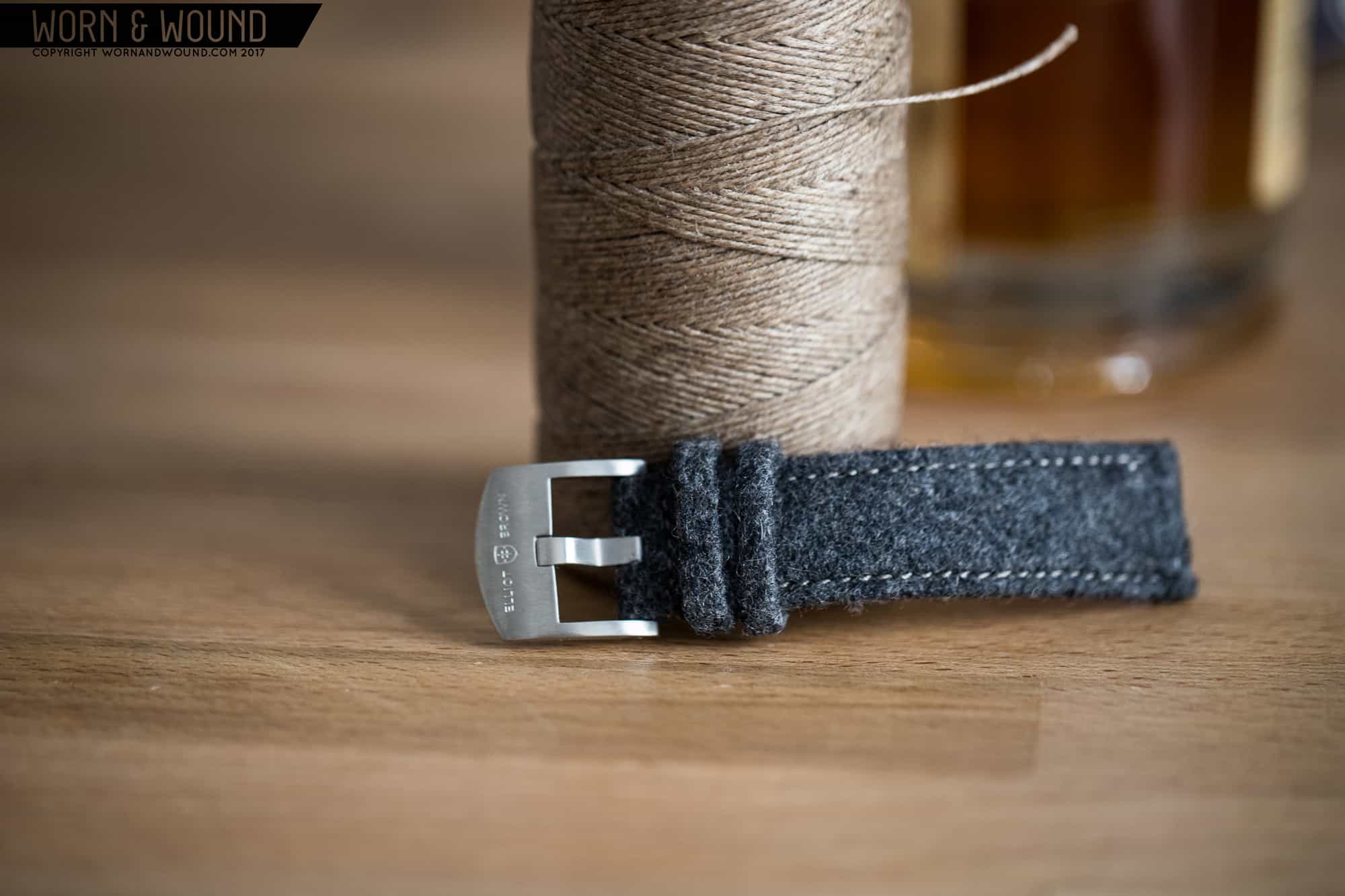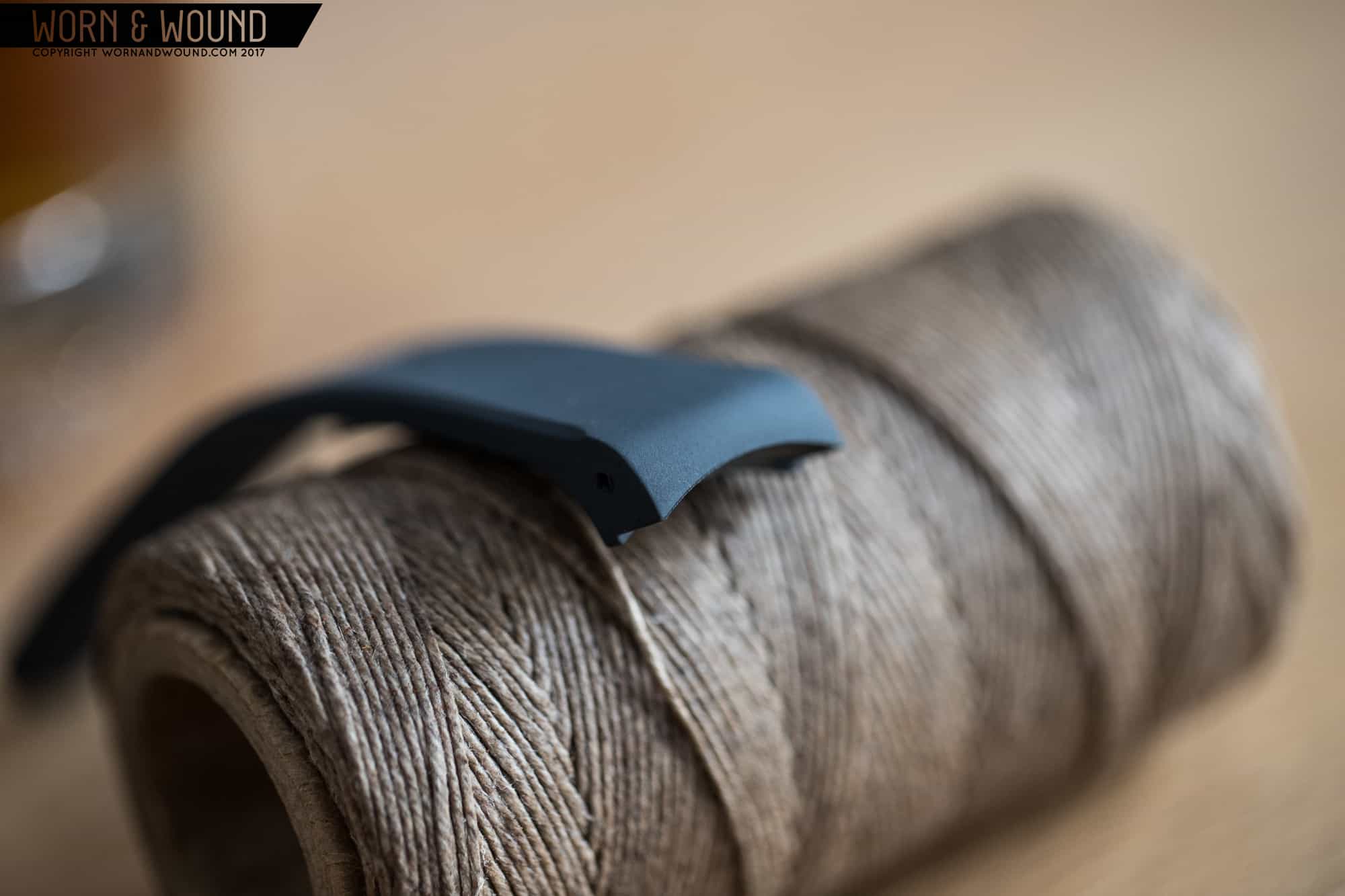“Form follows function” is one of the oldest rules in design, and it’s endured through the ages for good reason. The idea that the shape and appearance of an object should be determined by its functionality is fundamentally sound, but as watchmakers create ever more hyper-capable, rugged pieces, this can lead to some rather unattractive designs. Massive cases, seas of lume, mountainous crown guards—the list goes on and on. What about the man who wants a truly go-anywhere, do-anything timepiece, but still wants something a bit more refined on the wrist? 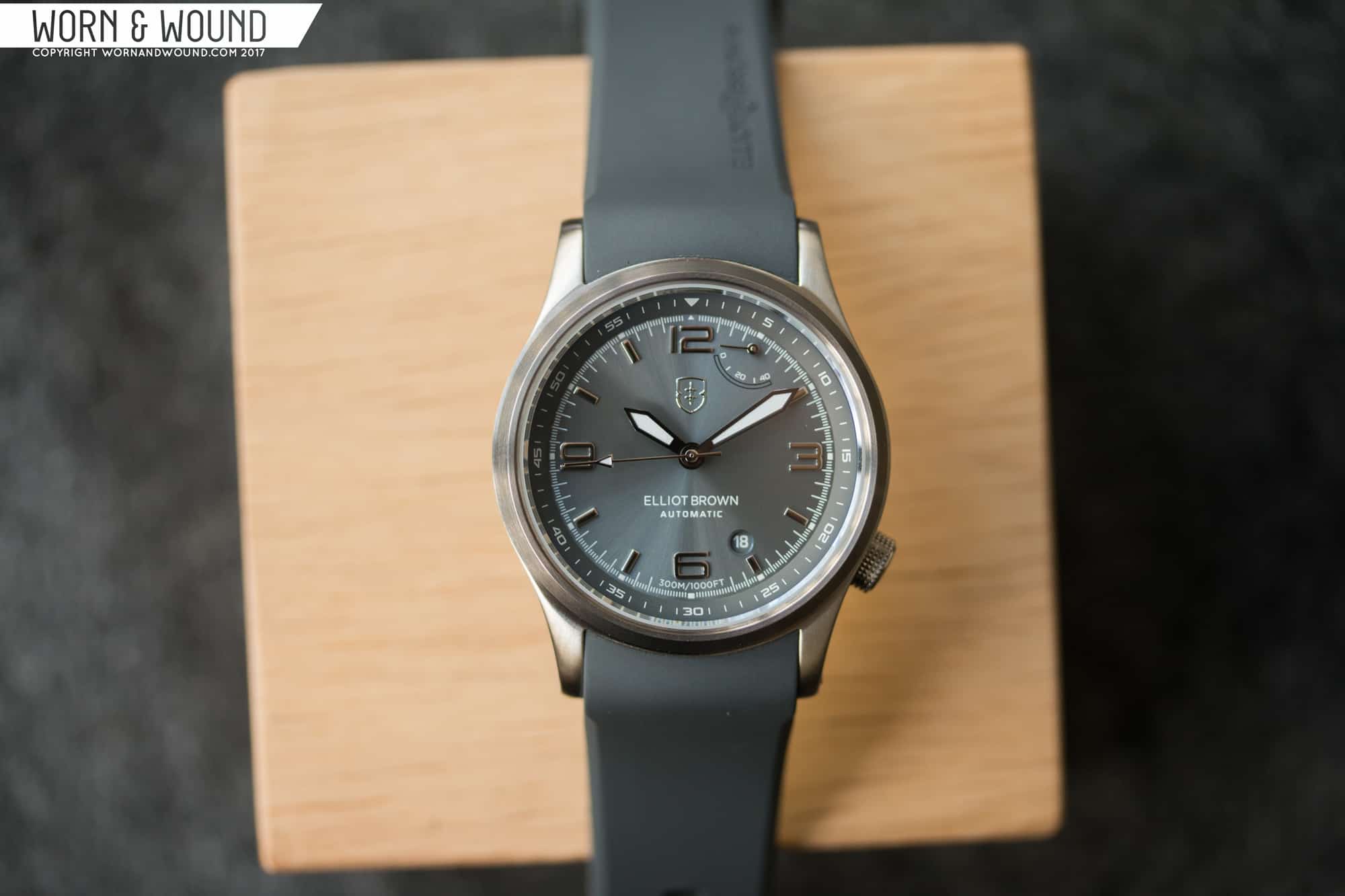 The team at Elliot Brown think they might have the answer in the Tyneham—the brand’s first automatic effort and a serious example of stealthy functionality. At first glance, the Tyneham simply looks like a dressed-up field watch, but there’s some surprising capability packed under the hood. Let’s dig in.
The team at Elliot Brown think they might have the answer in the Tyneham—the brand’s first automatic effort and a serious example of stealthy functionality. At first glance, the Tyneham simply looks like a dressed-up field watch, but there’s some surprising capability packed under the hood. Let’s dig in.
Hands-On with the Elliot Brown Tyneham
Hands-On with the Elliot Brown Tyneham
The case design of the Elliot Brown Tyneham is perhaps the best clue to this watch’s capabilities. While the overall shape is shared with the earlier Elliot Brown Canford, the similarities between the two end there. Viewed from above, the case is remarkably simple, with tapering lugs and a mid-case dominated by a contrasting, hardened bezel. It stands out even more when viewed in profile—the single wide bevel is the only real contouring to speak of here, and the almost-gunmetal coloring provides a much-needed break in visual flow across the case. The bezel is meant to be a bulletproof topper for the case, with Elliot Brown claiming the material is six times harder than the main case’s marine-grade 316L stainless. With how much abuse the average bezel takes, this is sure to keep the Tyneham looking fresh for far longer than usual.
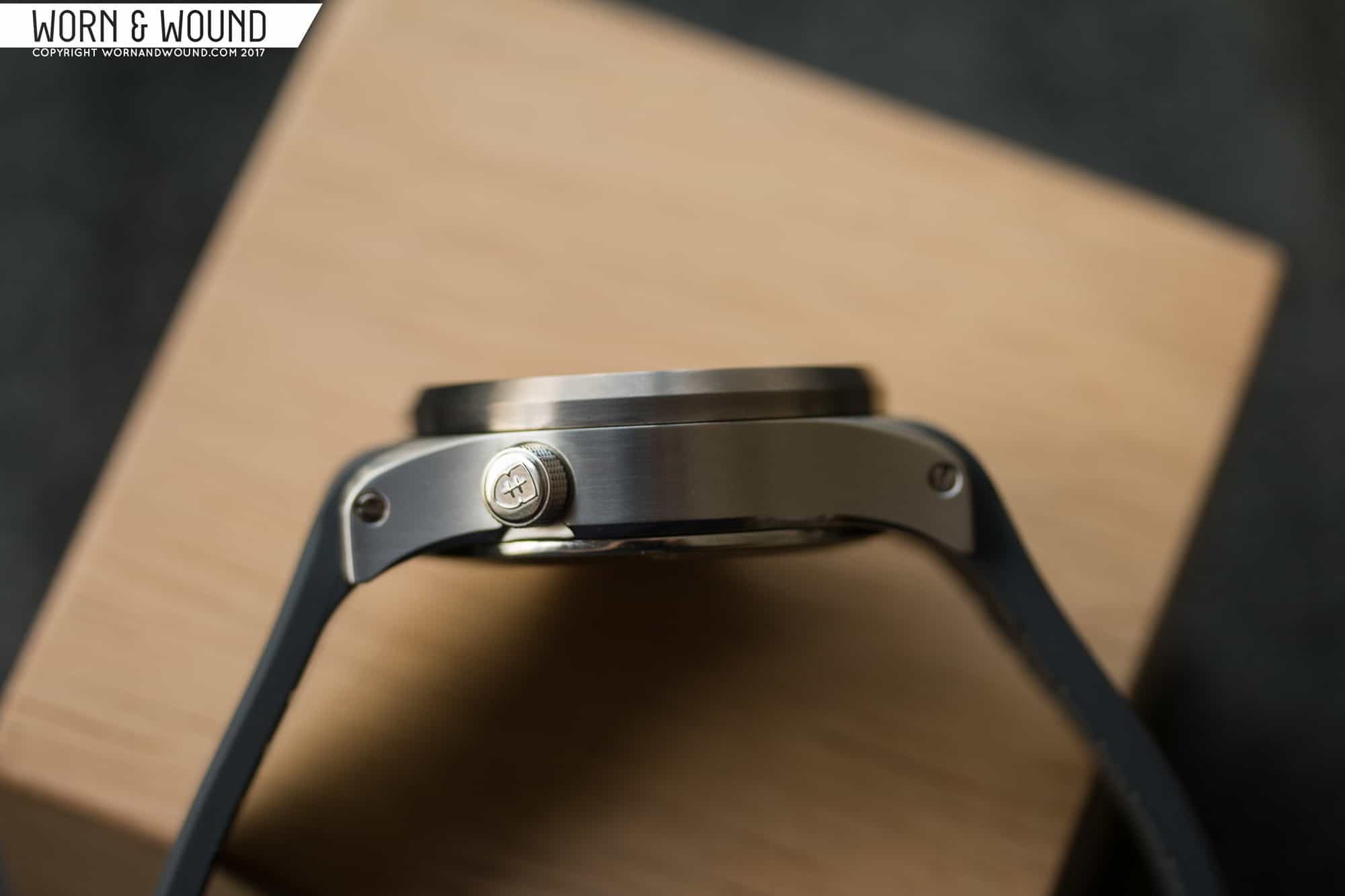
Other than that, the only break along the smoothly brushed slab sides is the hefty knurled crown at four. It’s a well-machined part, and its size allows for a smooth-not-loose winding action and an attractive raised Elliot Brown shield emblem. Around back, the screw-down case back features another EB shield, surrounded by deeply etched contour lines forming a topographical map of the famous Jurassic Coast in Dorset, England.
Tolerances throughout are extremely tight, and beyond just looking clean this enables one of the Tyneham’s party pieces: Elliot Brown has managed the feat of 300 meters of water resistance in a case without a screw down crown. Instead, the push-pull crown features a triple-seal construction to achieve that depth rating. 
The dial of the Tyneham follows a similar philosophy as the case, with a deceptively sleek design showing hints of the ruggedness underneath like an Army Ranger in a three-piece suit. The main dial surface itself is a dynamic, medium-gray sunburst with pronounced graining and miles of light play. Accenting this already glittering dial are a mix of applied rectangles and Arabic numerals, with 12, three, six, and nine rendered in a sporty, modernist font reminiscent of Porsche’s iconic typeface.
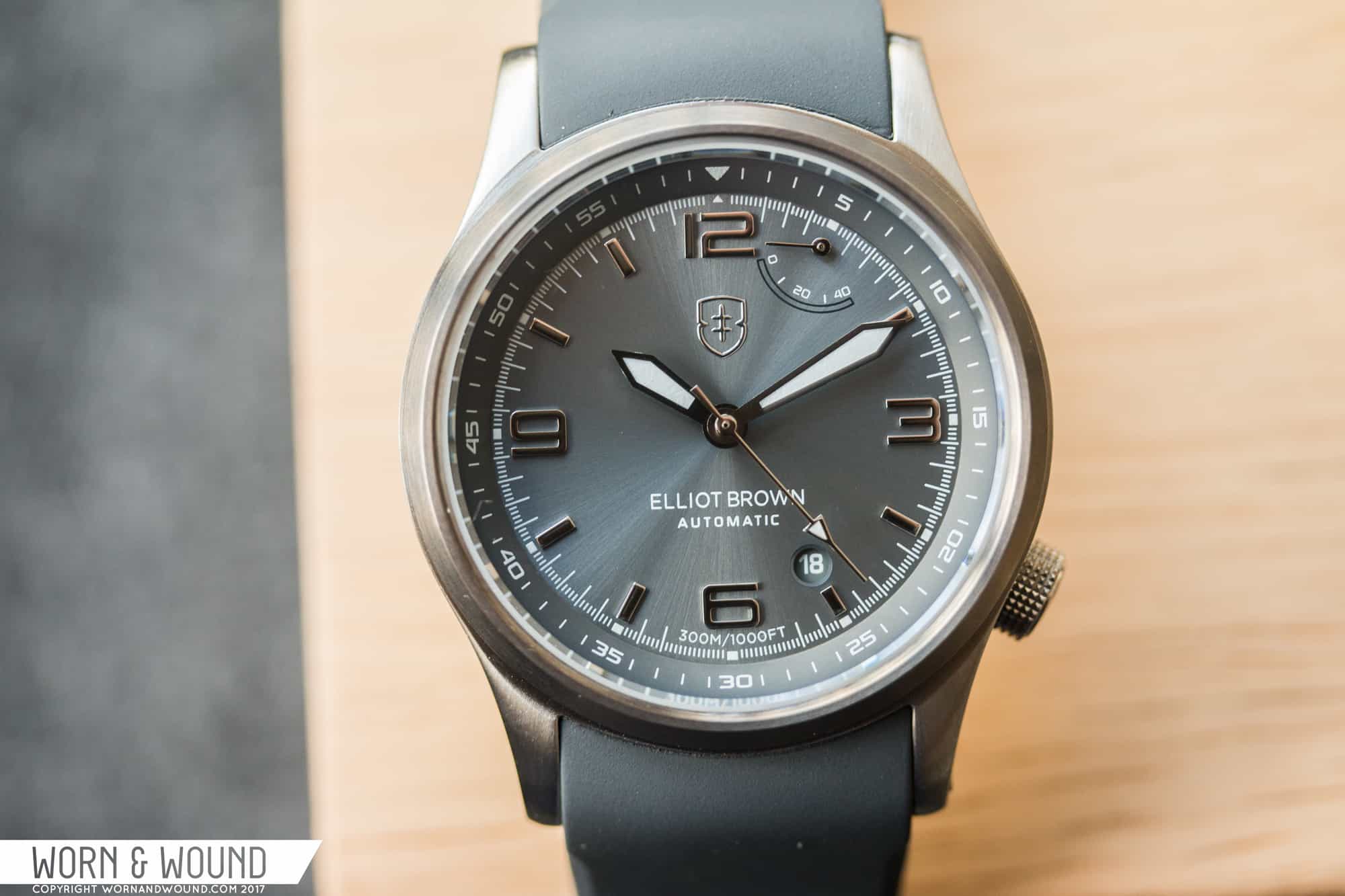
The indices are framed by a surprisingly steep inner minutes bezel, adding some bowl-like depth to go with the 14.5mm overall thickness (more on why the watch is so thick later). The handset is a dressed up version of a field/mil-watch classic—they’re a pair of tapering, mirror-polished Roman swords. Overall, it’s a modern, flashier take on the archetypal field watch look, but there’s a bit more to tell here. 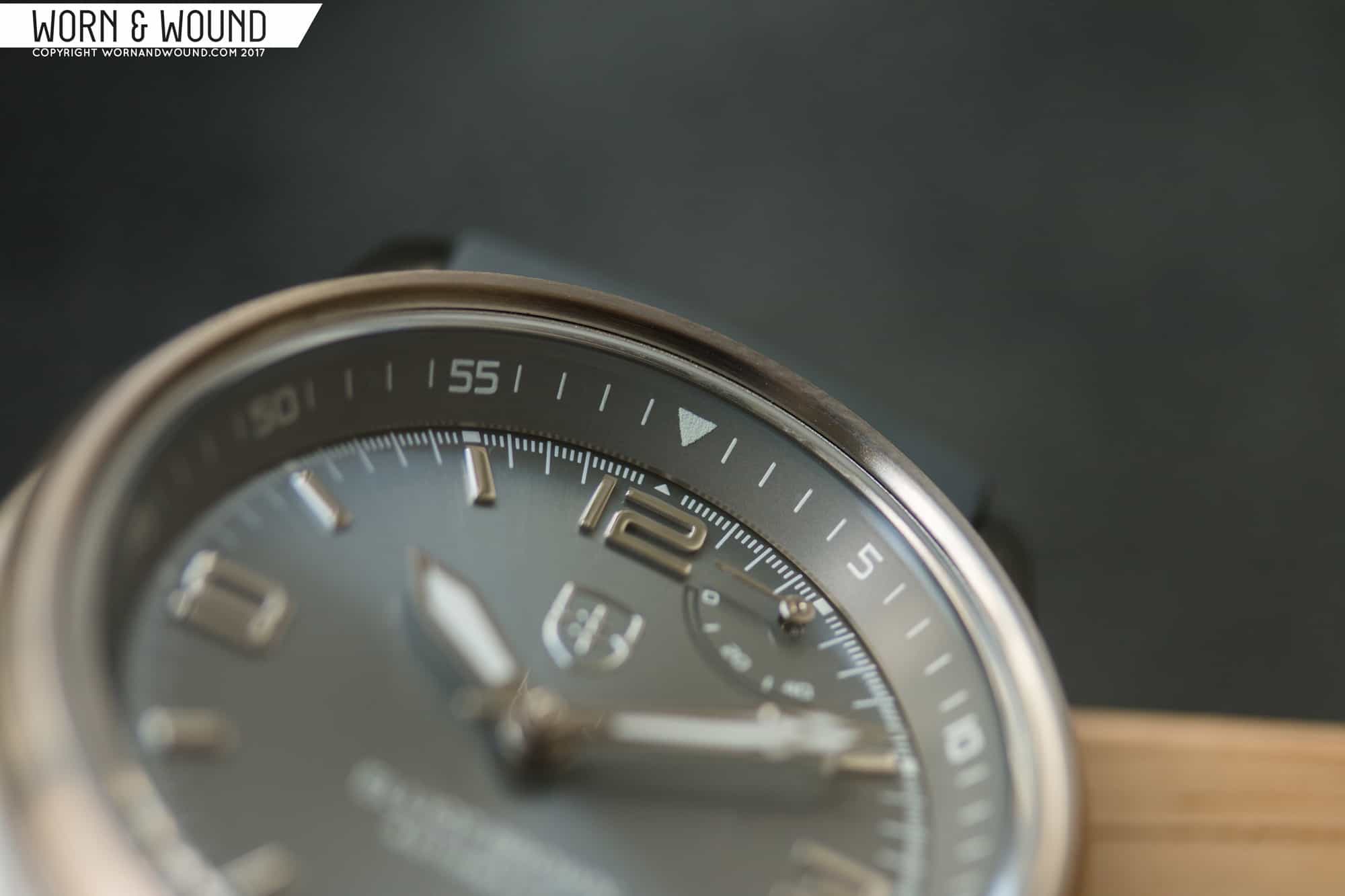 One concept that rears its head frequently when talking dials is the idea of visual weight—the distribution of large, unique, or particularly distracting elements across the surface. Ideally, the visual weight should be as balanced as possible, allowing the eye to naturally flow across the dial. Usually, when weight does become biased, it’s either at one location (such as a date window at three, for example), or two opposed locations (such as the chronograph registers at three and nine). The Tyneham, however, is a little unorthodox. The date window is way down at five o’clock, and the closest thing to a balance point for this little window is the power reserve sweep at one. Now, a power reserve indicator is a useful function, particularly on a manual wind watch, but here it’s a bit unnecessary, and its inclusion weighs down the right side of the dial. This detail aside, however, the dial is a handsomely refined take on traditional field watch themes.
One concept that rears its head frequently when talking dials is the idea of visual weight—the distribution of large, unique, or particularly distracting elements across the surface. Ideally, the visual weight should be as balanced as possible, allowing the eye to naturally flow across the dial. Usually, when weight does become biased, it’s either at one location (such as a date window at three, for example), or two opposed locations (such as the chronograph registers at three and nine). The Tyneham, however, is a little unorthodox. The date window is way down at five o’clock, and the closest thing to a balance point for this little window is the power reserve sweep at one. Now, a power reserve indicator is a useful function, particularly on a manual wind watch, but here it’s a bit unnecessary, and its inclusion weighs down the right side of the dial. This detail aside, however, the dial is a handsomely refined take on traditional field watch themes.
With regard to the movement, Elliot Brown utilizes a Miyota 9130 power plant, which is a fine (if little-used) movement on its own. It’s an automatic caliber that features 40 hours of power reserve, and it hacks and hand-winds. Coupled with Miyota’s consistent quality and the ocean of replacement parts available in the event of a catastrophe, this would be an adequate choice without any aftermarket work at all. Elliot Brown’s vision for the Tyneham, however, was to create a mechanical watch that could handle some rough-and-tumble situations. To accomplish this goal, the brand built a proprietary stainless steel cage and shock absorber system that suspends the movement within the case. And it’s this extra shielding that accounts for some of the unusual case thickness we see here.
Strap choice is another strong suit for the Tyneham, with our tester coming in on both an attractive leather-lined gray felt and a perfectly fitted, signed rubber strap. Both have their perks: the felt is perfectly matched to the dial and unique enough to draw plenty of attention, while the rubber is supple, comfortable and unusually versatile. I’m usually the last person in the world to wear rubber straps, but once this one went on the watch it never came off again. The feeling of quality, usually the weak link in any rubber strap, was better than most others I have handled, and the design continues the themes of the watch itself perfectly. The inner lining, for example, continues the topographical map of Dorset started by the case back. Both straps come fitted with a wide, engraved signed buckle. The Tyneham also comes equipped with a quick-release strap system, using a single sided screw-down bar rather than spring bars. These bars take the fumbling out of strap changing entirely, making the swap a simple, minute-long affair.
Even without all the hidden capability, the Elliot Brown Tyneham presents itself as an attractive, sporty field watch, but the added considerations around making this a harder-wearing, more robust watch make the Tyneham a rarer bird indeed. The price, on the other hand, is not inconsiderable either, with current exchange rates pegging it at around $1,065. At that price, there is some significant competition to be had, especially coming from the Germans who produce some tough watches, among them the Archimede Outdoor Protect and the Damasko DA36. Both of these watches offer hardened cases, and additionally, the DA36 comes with a slew of other proprietary case technologies that make the watch a particular standout among its peers. There’s also the BALL Engineer Hydrocarbon DEVGRU, a beast of a watch that boasts some similar ideas regarding movement suspension, but granted the aesthetic is a bit less amenable to daily wear. That said, there’s still an impressive amount of proprietary work in the Tyneham, and for those who are bitten by this one’s charms, it’s a unique consideration. Elliot Brown









 Featured Videos
Featured Videos





